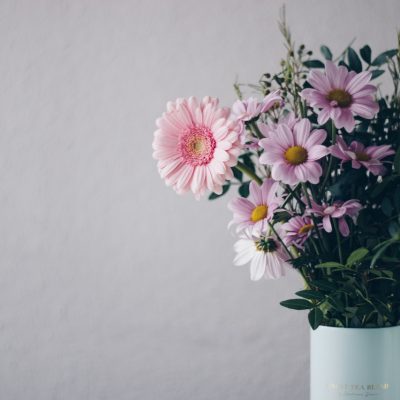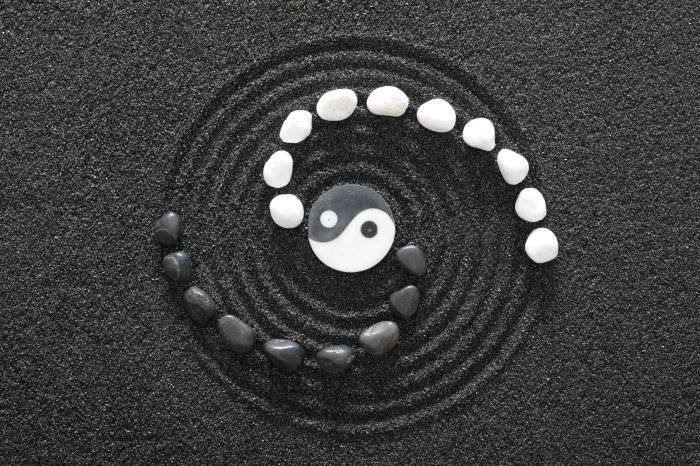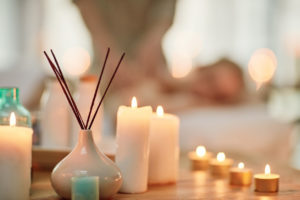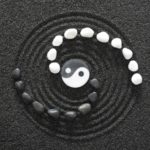Feng Shui Symbols: Flowers

Have you ever wondered why a fresh bouquet of flowers elicits such feelings of joy? Is it the scent? Is it the colour of the flowers? According to Feng Shui symbolism, both the beauty and the flowers themselves symbolize good luck. Furthermore, flowers possess positive energy and have powerful healing qualities.
Pretty amazing considering the flower itself has a relatively short life span. In fact, this very characteristic is itself part of its appeal. Flowers teach us to live in the moment; “the incredible fragile beauty of a flower is not everlasting, it transforms itself into a different form with the passing of time”.
Symbols, according to the ancient art and science of Feng Shui, have both purpose and meaning. They can be used as tools to create balance and harmony in our surroundings. The practice of Feng Shui can be divided into two main goals: the maximizing of positive energy or chi, and the promotion of prosperity, health and happiness.
Feng Shui symbolism is both simplistic and complex. As mentioned previously, a bouquet of fresh flowers symbolizes good luck. However, specific flowers have specific meanings and choosing which ones to display in your home or workplace should be done with purpose.
Peony
Peonies are used in Feng Shui as a general cure for love and romance. Staying true to form, there are specific details to be considered since peonies vary in colour. Each colour has its own symbolism. For instance, displaying a vase of pink peonies in the living room symbolizes the desire of a single person to marry.
Pink is associated with romance. It’s a blend of red and white and, therefore, derives qualities from both these colours. Red symbolizes carnal passion, love, and romance, while white represents purity, innocence, hope, and openness. By displaying pink peonies, one invokes innocence, purity, hope, and carnal love.
Lotus
The lotus symbolizes ultimate perfection, largely due to the plant’s origins. A lotus grows in shallow, murky waters with its roots in the mud. Yet, the bloom never touches this dirty water as it rises on a long stem. Thus, the lotus represents purity, beauty, and wealth, and its display promotes a harmonious home.
In Chinese medicine, every part of the lotus plant, from roots to petals, has a medicinal use, enhancing its symbolism for a healthy home in Feng Shui.
Cherry Blossoms
Flowering branches, such as cherry blossoms, symbolize overcoming adversity. Often blooming in winter or early spring, they embody the spirit of overcoming obstacles.
Displaying them infuses your space with the energy of new beginnings and rebirth. They are symbols of fresh starts, and can serve as cures for love, health, or work-related challenges.
Orchid
Historically, orchids symbolized fertility. But more recently, they’ve come to represent the quest for perfection, mirroring the flower’s natural symmetry. They can be applied to various life aspects, including marriage, health, and career. The colour of both the flower and its pot is significant.
With orchids naturally available in various shades, choose the colour intentionally. For instance, a pink or orange orchid might symbolize love or creativity, whereas a white one indicates clarity and peace.
Narcissus
Blooming early in spring, the narcissus symbolizes renewal and fresh energy. It’s a beacon of good luck, especially concerning career aspirations. Its presence is believed to reward hard work aptly. Bulb flowers like the narcissus and tulips are deemed auspicious, inspiring greater wealth.
Again, choose the flower’s colour with purpose. For a convalescent, white narcissus symbolizes healing and new beginnings. For someone embarking on a new career, purple flowers, associated with wealth chi, are ideal.
Chrysanthemum
Chrysanthemums radiate the energy of happiness and joy. Their sun-like blooms bring into homes the vibrant, life-giving energy they represent. They also signify a life of ease and balance, making them lucky charms. Especially when placed in the front entryway, they beckon good fortune.
Since chrysanthemums are synonymous with happiness, they can alleviate feelings of anxiety and stress. Their presence in a space boosts positivity and optimism. Feng Shui symbols carry distinct purposes and meanings. Hence, incorporating flowers in living or working spaces requires thoughtful consideration.
Every flower type and colour has its unique utility and cure. However, by their very nature, flowers exude a specific energy. While pictures of flowers can emulate specific emotions or feelings, dried flowers don’t.
When staging a home for sale, flowers can symbolize good luck, happiness, and positive vibes. The strategic placement of blooms can elevate the first impressions of potential homeowners.
“Think of flowers as the way a plant smiles – and those smiles create happy feelings for visitors to your home or prospective buyers.”


FAQs About Flowers in Feng Shui
In Feng Shui, the placement of flowers in your home can enhance the flow of positive energy or chi. Here are some general guidelines:
- Living Room: This is often considered an ideal place for flowers to create a welcoming and lively energy.
- Dining Area: Flowers here can symbolize abundance and can enhance the nourishment and enjoyment of meals.
- Bedroom: Caution is advised with flowers in the bedroom. While they can bring a soothing energy, too much energy (especially from large or fragrant flowers) can disturb sleep. Some prefer to avoid flowers in the bedroom altogether in Feng Shui practice.
- Avoid Blocked Spaces: Ensure flowers don’t block pathways or create clutter. The chi should flow smoothly around them.
- Health and Family Areas: Placing green plants or flowers in areas associated with family and heal
Flowers are generally associated with the Wood element in Feng Shui. This element is connected to growth, vitality, and renewal. Having flowers or plants in your home can thus bring the energy of growth, health, and new beginnings. They can also help in balancing the Five
Elements in your space, especially in areas that need an enhancement of the Wood element.
While real flowers are preferred in Feng Shui for their natural energy and ability to purify air, fake flowers are not necessarily bad. The key is that they should be of high quality and look as realistic as possible. They should be kept clean and dust-free. The intention behind using fake flowers also matters; they should be used to create positive energy and beauty in your space.
However, it’s important to note that they won’t have the same life-giving energy and air-purifying qualities as real plants.
- Red Flowers: Symbolize passion, fame, and love. They bring a strong, vibrant energy.
- Yellow Flowers: Associated with happiness, warmth, and welcoming energy. They can brighten up any space.
- White Flowers: Represent purity, innocence, and new beginnings. They can bring a calming and peaceful energy.
- Pink Flowers: Often related to love, romance, and caring. They bring a gentle and soothing energy.
- Blue and Purple Flowers: Linked to spirituality, healing, and tranquility. They can help in creating a contemplative and serene space.














